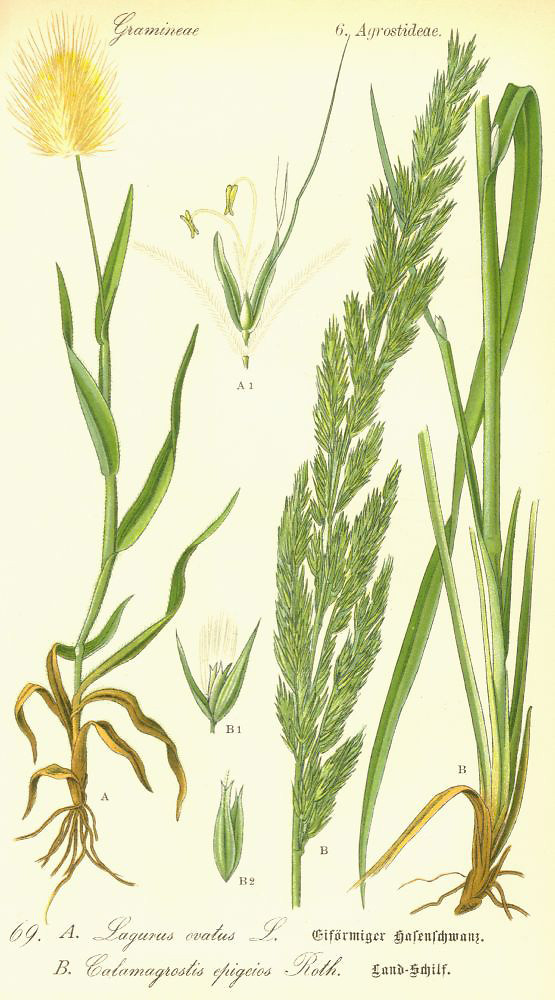Calamagrostis epigejos
Small-reed ( Calamagrostis epigejos )
The small-reed ( Calamagrostis epigejos ), also known as sand reed grass, sand, pipe, tube land, land or forest reeds reed, is a flowering plant in the family of grasses ( Poaceae ).
Description
The country - reed grass is a perennial, herbaceous plant that reaches the stature heights between 80 and 150 cm. It forms long, creeping underground runners. The strong stems are rough in the upper half. The blue - to gray-green leaf blades are up to 70 cm long and 2 cm wide and are very rough on the upper side with a sharp edge. The up to 9 mm long ligule ( ligules ) are strong.
The flowering period extends from July to August. The paniculate inflorescences are narrow and upright. The thick branches of the panicle up to 10 cm long, are erect and also rough. The spikelets are 5-7 mm long and are flowered. The glumes are linear in shape and grannenartig pointed. Marked with a fringe of hair lemmas are three annoying. The awn on the center of the lemma is constantly back and surmounted this by more than a third.
Ecology
It is moderately challenging and survives the winter as partly evergreen Geophyt and Hemikryptophyt. As Wurzelkriechpionier it can form the forest regeneration inflammatory foci in clearcuts. The Vegetative propagation is very numerous, by the very long, thin, underground rhizomes. The small-reed is a rhizome - Geophyt, the deeply rooted to 2 m. The roots are very rich in starch; the starch grains are composed.
Flowers Biologically it is the " Langstaubfädigen type ". Pollination is accomplished by the wind.
There are so-called " Spelzfrüchte " before. The propagation unit ( diasporas ) are covered by the glumes caryopses, the, water and propagate as Schirmchenflieger Velcro Misty. Fruit ripening takes place from August to October.
Occurrence
The Eurasian spread -reed comes in all of Germany from the lowlands up to middle mountain ranges before ( in Austria altitudes of up to 1140 meters). Later in the year, after the main flowering period, the inflorescences are still good to see. It is found on dry to moderately fresh, often swift water, humus-rich or rohsandigen / clayey sites. Especially in light deciduous and coniferous forests, on forest impacts, to travel and field margins, on coastal and inland dunes and in moist river banks the species occurs frequently. In eastern North America, it occurs as a neophyte.
The Ordinary beach grass (Ammophila arenaria ) forms by crossing with the small-reed a genus Bastard, the Baltic beach grass ( Calammophila baltica, Syn: Ammocalamagrostis baltica ).
Use
The small-reed is used as a stray grass and dune planting.










